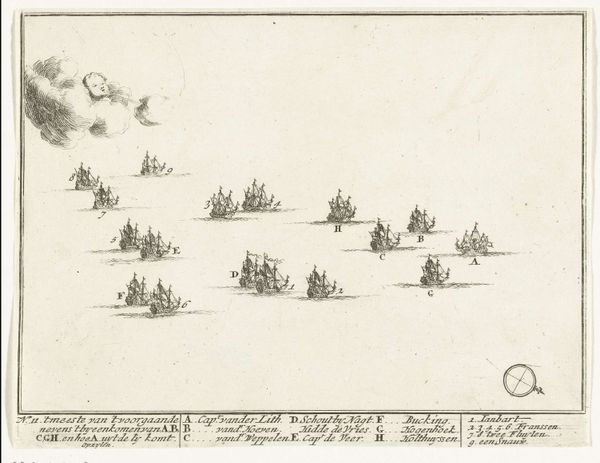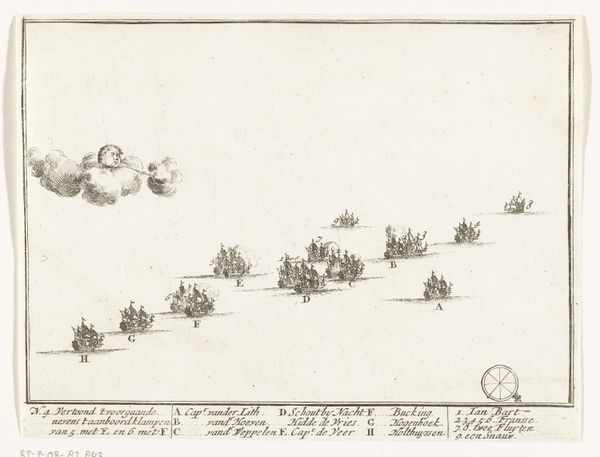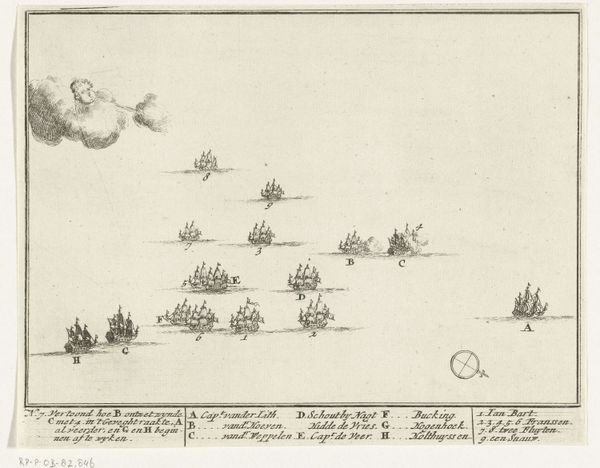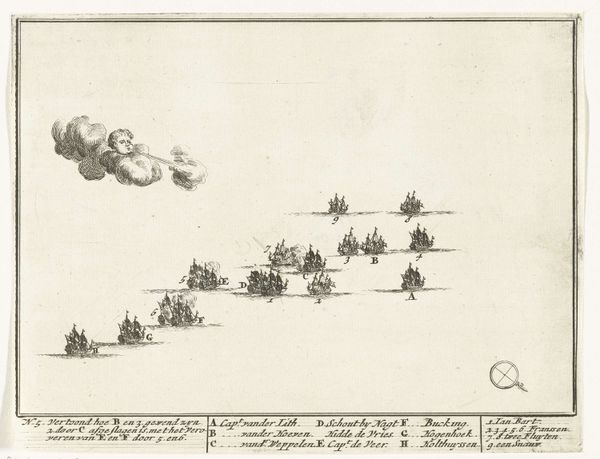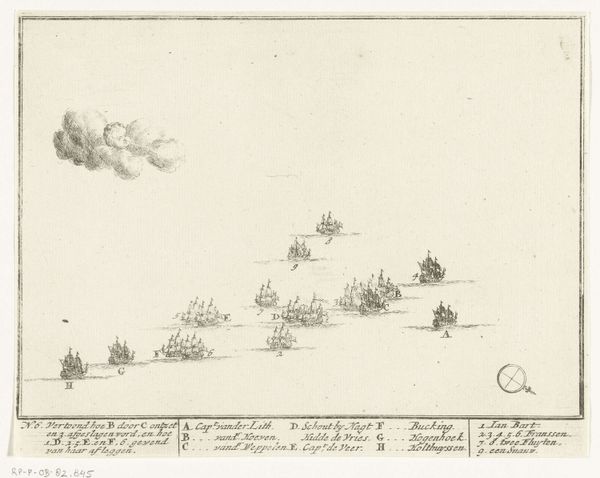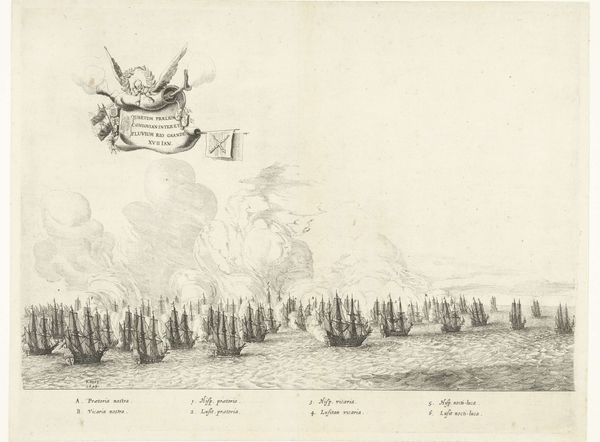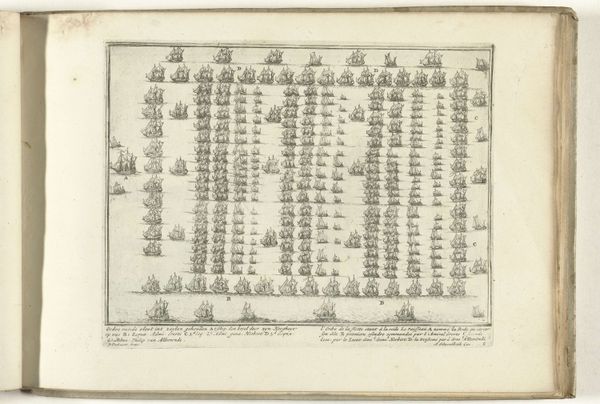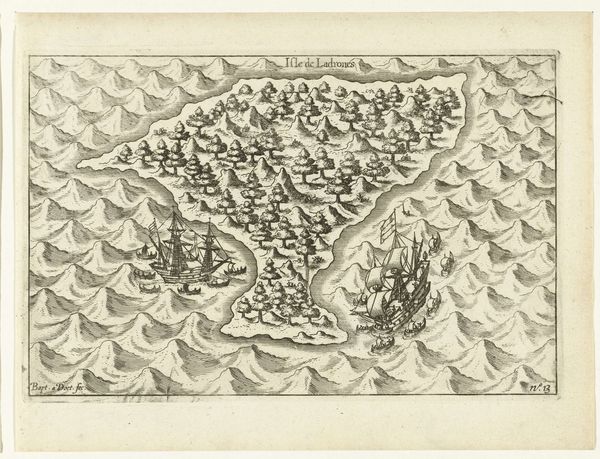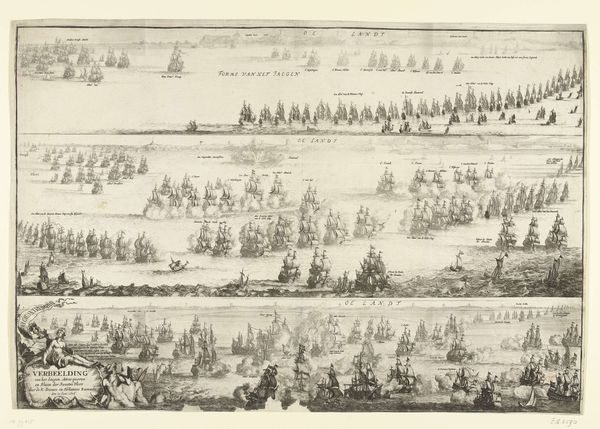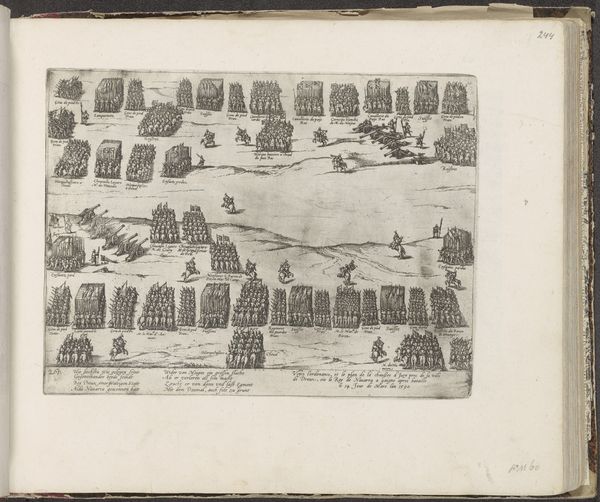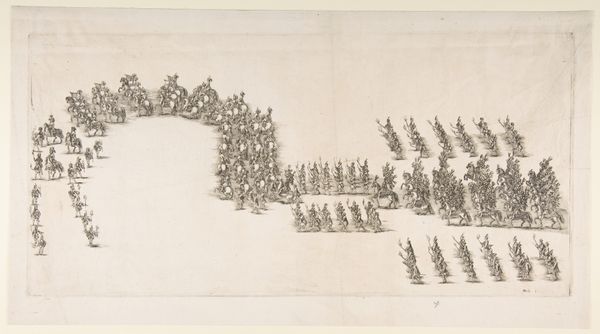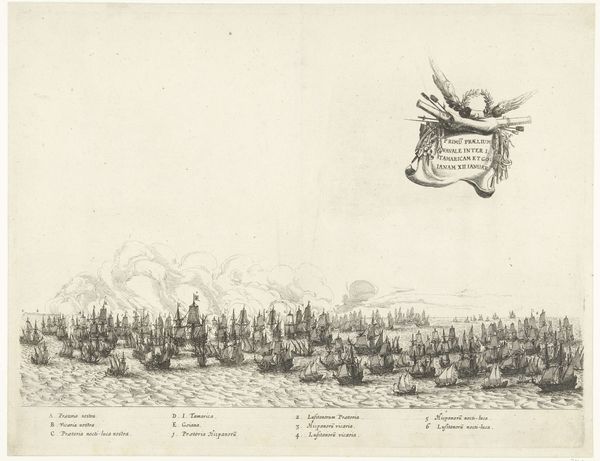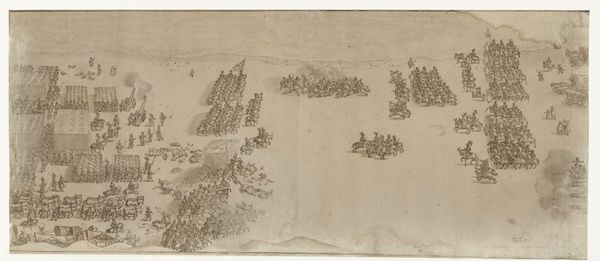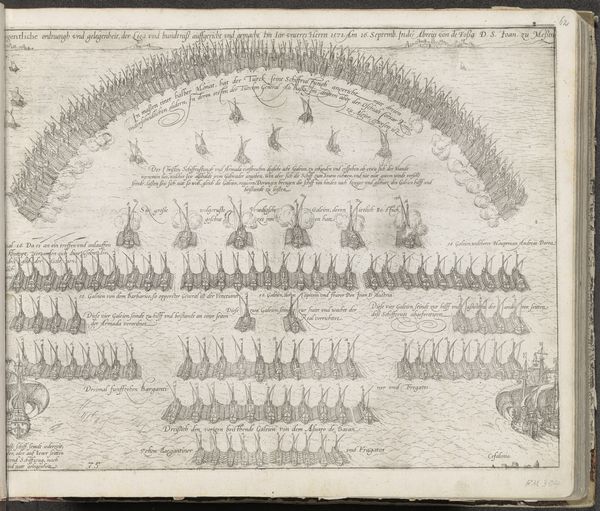
Zeegevecht tussen Hollanders en Fransen op de Noordzee (plaat 14), 1694 1694
0:00
0:00
print, engraving
#
baroque
#
dutch-golden-age
# print
#
old engraving style
#
landscape
#
line
#
history-painting
#
engraving
Dimensions: height 148 mm, width 192 mm
Copyright: Rijks Museum: Open Domain
Curator: Adriaen Schoonebeek, a figure of the Dutch Golden Age, crafted this engraving entitled "Zeegevecht tussen Hollanders en Fransen op de Noordzee (plaat 14)" around 1694. The work currently resides within the Rijksmuseum's collection. Editor: It strikes me as a meticulously ordered chaos. The crisp lines belie the ferocious action it represents, making it feel more like a naval strategy map than a depiction of war. Curator: Indeed, its cool, analytical tone speaks to the priorities of the era. Observe how the lines meticulously define each vessel, differentiating between the Dutch and French fleets, perhaps indicative of the rising Dutch mercantile power asserting dominance. Editor: The almost clinical depiction, with the sky occupied only by a decorative puff of clouds and keyed ships, seems intended less to stir patriotic fervor and more to provide a somewhat sanitized account of tactical maneuvers and political positioning. Curator: Quite. We must consider the print medium. Engravings such as this were circulated widely. So the aim might have been to demonstrate Dutch naval capabilities rather than romanticize battle. What do you make of the compass rose on the lower right? Editor: I find that element adds to the print's objective quality. Positioned in the bottom corner, it is functional. Schoonebeek is giving us not just the scene but also a very clear guide to navigate the battle’s representation. Curator: Notice, too, the ships themselves: tiny, detailed, and presented in rows, almost like military personnel lining up for inspection rather than fighting. This linear approach underscores the need to represent naval power using rationality and order, characteristic of Dutch Baroque sensibilities. Editor: Thinking about our contemporary relationship to visual imagery, I would expect to see dynamism rendered as blur or action, yet the stasis communicates purpose through order. Perhaps this image played a role in cultivating a certain image of the Netherlands, not just its power but also its methodical and controlled nature. Curator: Yes, it encapsulates the intersection of naval history, graphic skill, and emerging national identity in a carefully designed schema. Editor: Ultimately, it is a fascinating illustration of how historical accounts were disseminated. What it included, but equally important, what it left out, informs the impression and subsequent understanding of this naval engagement.
Comments
No comments
Be the first to comment and join the conversation on the ultimate creative platform.
